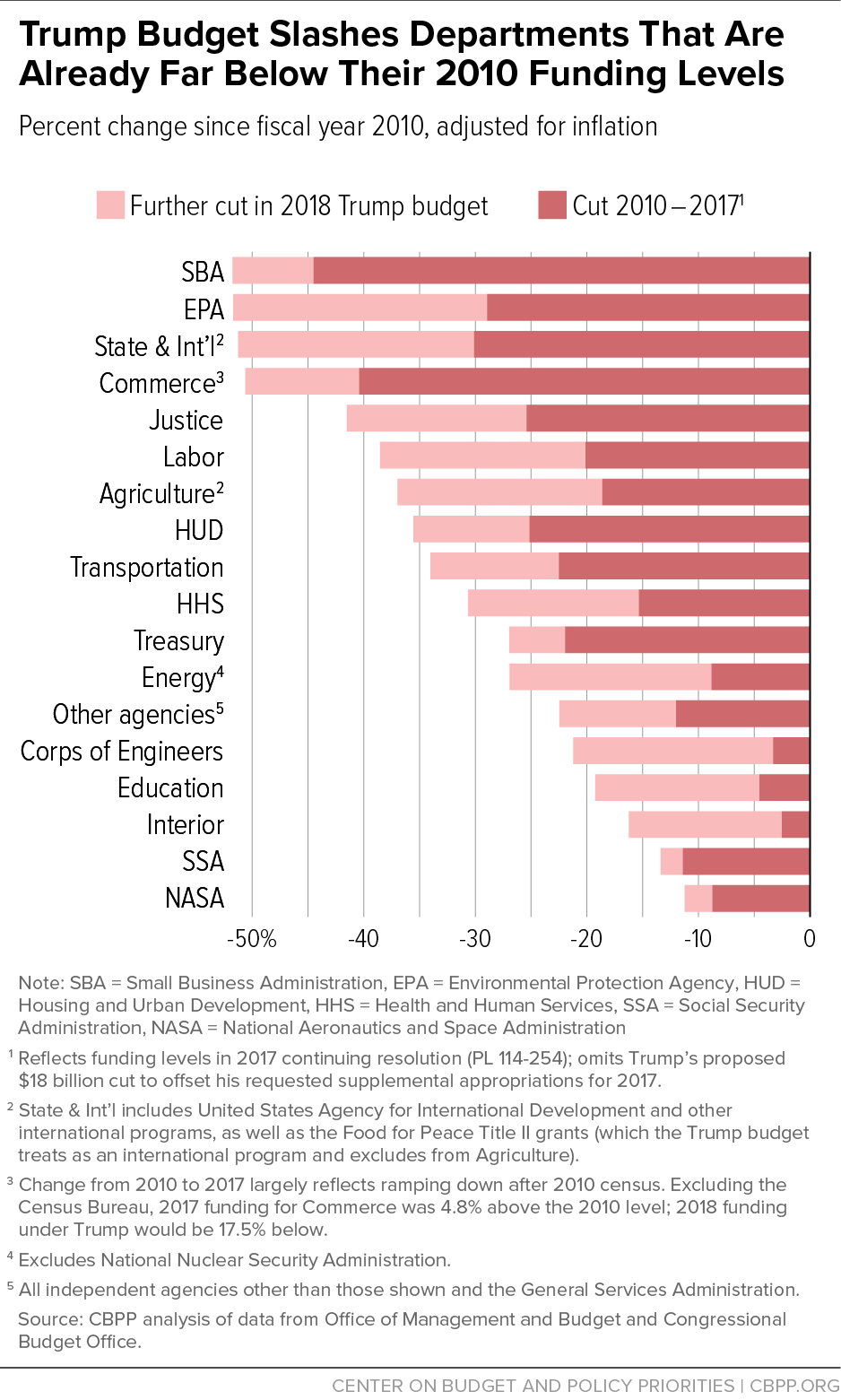BEYOND THE NUMBERS
President Trump’s “skinny” budget for 2018 proposes cuts to non-defense discretionary (NDD) programs that would be particularly damaging because, as the chart shows, they target many programs that policymakers have already cut significantly over the past seven years. His budget boosts defense spending by $54 billion and raises funding for the Departments of Veterans Affairs and Homeland Security, offsetting these increases by cutting funding for the remaining NDD programs to more than 30 percent below the 2010 level, after adjusting for inflation.
Several departments would be hit even harder (the full data are available here):
- The Environmental Protection Agency, already 29 percent below its 2010 level, would take the largest percent cut under the Trump budget, falling to 52 percent below 2010.
- The State Department and other international programs, now 30 percent below their 2010 levels, would fall to 51 percent below 2010.
- The Labor Department, now 20 percent below its 2010 level, would fall to 39 percent below 2010.
- The Department of Housing and Urban Development, now 25 percent below its 2010 level, would fall to 36 percent below 2010.
- The Department of Health and Human Services, now 15 percent below its 2010 level, would fall to 31 percent below 2010.
The cuts since 2010 largely reflect the 2011 Budget Control Act (BCA), which set tight annual caps on defense and non-defense appropriations through 2021 and then imposed additional sequestration budget cuts. Although President Obama and Congress enacted sequestration relief that reduced these cuts each year, non-defense programs have nonetheless faced seven years of very austere funding levels. And the remaining sequestration relief expires in 2017, which means sequestration will take full effect for the first time in 2018 under current law. Trump’s budget would reverse sequestration for defense programs but slash non-defense programs far below the full-sequestration level.
As we’ve highlighted, the Trump cuts would harm investments that help working-class Americans and increase the nation’s future productivity. Policymakers should recognize that sequestration cuts are deep in both defense and non-defense and provide sequestration relief for both in 2018, as they’ve done on a bipartisan basis for each year through 2017.

